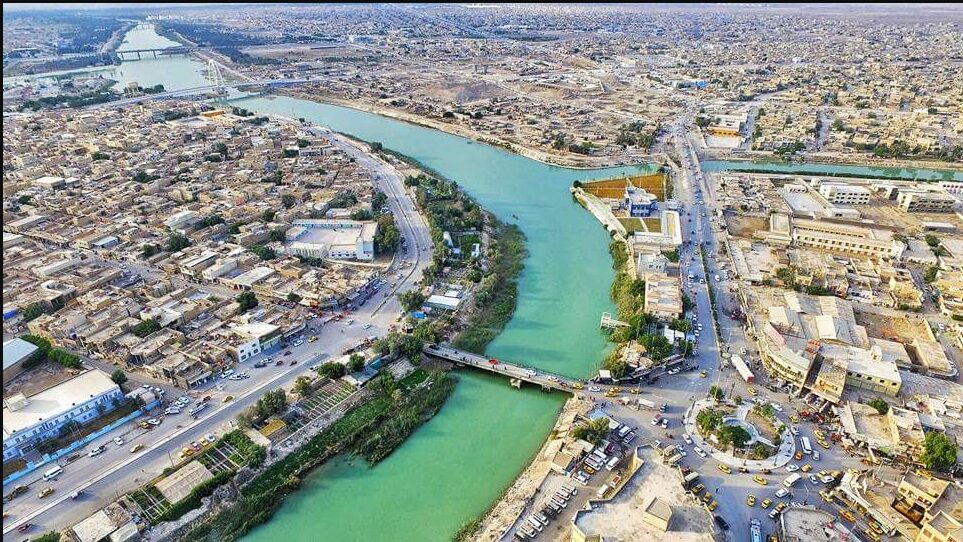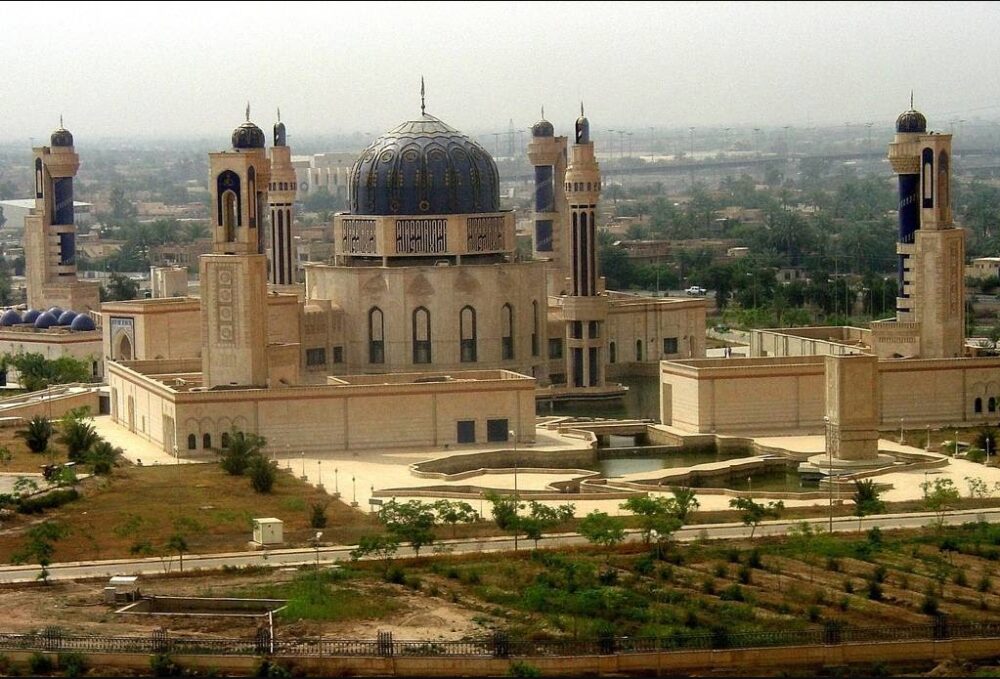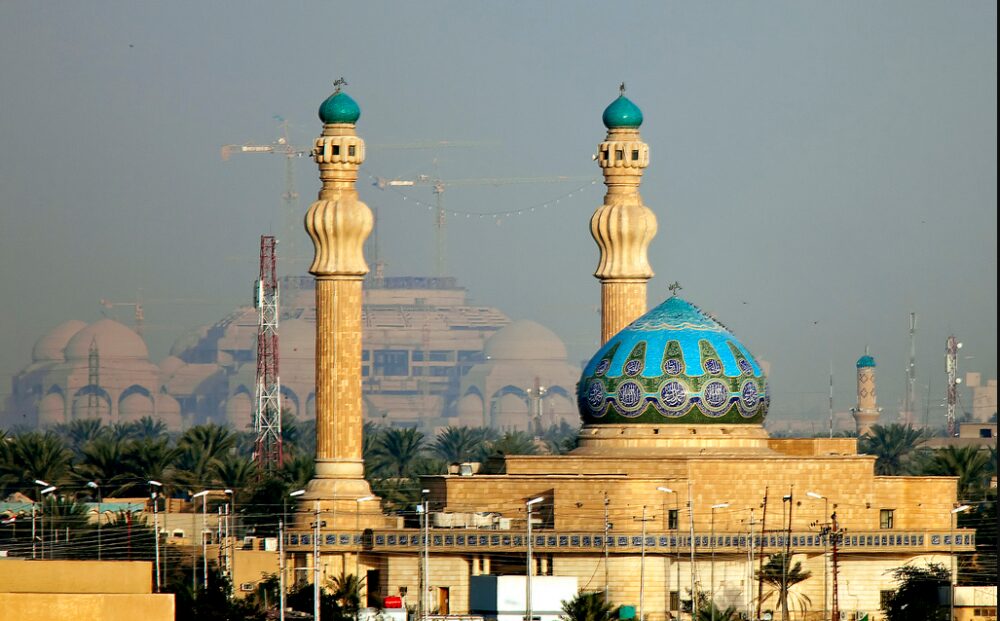Capital of Iraq
The capital of Iraq is Baghdad. It has largest city in the country, with 6,431,839 inhabitants and one of the most populated in the Middle East after Cairo and Tehran. It is located next to the Tigris River.
History
The capital of Iraq is Baghdad although its Persian origin is not disputed; there are several proposals as to its etymology. The most reliable and most accepted among them is that the name comes from the Middle Persian, and is composed of Bag “god” + did “donated”, translating as “donated by God” or “the gift of God” in modern Persian Baɣdād. Another proposal is that the name comes from the Persian Middle Bāgh-dād “The Garden Donated”.

In 762 AD, Caliph Al-Mansur founded Baghdad, near the ruins of ancient Babylon, and made it the capital of Islam. Mansur believed that Baghdad was the perfect city to be capital of the Islamic empire under the Abbasid Caliphate. Mansur was so delighted with the site that he said: “This is really the city that I am founding, where I am living, and where my descendants will reign afterwards.” He developed an economic and capital policy, especially because his situation gave him control of strategic trade routes. It was also an excellent location due to the abundance of water, which was very rare during that time and its healthy climate.
Interesting Facts about Baghdad
Government
The capital of Iraq is Baghdad has 89 official neighborhoods within 9 districts. These subdivisions of the city served as administrative centers for the distribution of the municipal services but until 2003 they did not have a specific political function. In early April 2003, the United States controlled the Coalition Provisional Authority (CPA), beginning the creation of new functions for those. Each council of the neighborhoods elects its representatives from among its members to serve on one of the councils of the nine districts of the city. The number of neighborhood representatives in a district council is based on the population of each neighborhood.
Do you know about the capital city of Iran ?
The next step is each of the councils of the nine districts names their elected representatives, to form the Baghdad City Council with 37 members. This local government system connects the population of Baghdad with the districts, districts and city hall. The same process is used to appoint representative councilors for the other communities in Baghdad Province, outside the city itself. There, the local councils of 20 neighborhoods (Nahia) are elected and these councils elect representatives from among their members to act in the six district councils (Qada), just as within the city, district councils elect representatives of among its members to appoint the 35 members of the Baghdad Regional Council.

The final step in establishing the local government system for the Baghdad Province is the election of the Baghdad Provincial Council. As before, the representatives of the Provincial Council were elected proportionally to the population level of the districts they represent. The 41 members of the Provincial Council took office in February 2004 and served until the national elections held in January 2005, when the new Provincial Council was elected.
Geography
The city is located on a vast plain divided by the Tigris River. It divides Baghdad into two, the east half, also known as “Rusafa”, and the west half, the “Karkh”. The land where the city is located is flat and low in height, due to the long and periodic floods caused by the river. Baghdad has a very hot and arid climate (BWh, according to the table of Köppen), being one of the hottest cities in the world.
Weather
During the summer season, from June to August, the average temperature is 34.8 ° C and accompanied by a scorching sun. The rain is practically unpublished in the zone during that season. During the day, the thermometers can shoot up to 60 ° C in the shade and at night go down to 15 ° C. Moisture is also very low due to the distance separating the city from the Persian Gulf , which helps form the common summer dusty storms shaken from the desert .
During the winter, from December to February, temperatures are noticeably softened. The maximum ranges from 25 to 26 ° C and minimum temperatures usually above -6 ° C, although it is not uncommon in Baghdad to experience winter temperatures below -10 ° C. The presence of the Tigris attenuates the effect of continentalidad.La annual rain is limited to the period from November to March, with the averages of about 140 millimeters with maximum records of 215 and minimum of 0 mm. On January 11, 2008, an unusual print took place in Baghdad, as the city dawned with a thin layer of ice, the first in 100 years.
Culture
Baghdad has always played an important role in Arab cultural life and has been home to prominent writers, musicians and artists. The dialect of Arabic spoken today in Baghdad differs from that of other large urban centers in Iraq. It is possible that this was caused by the repopulation of the city with residents of rural areas in the Late Middle Ages.
Some of the city’s major cultural institutions include:
Iraq National Symphony Orchestra – rehearsals and performances were briefly interrupted during the second Gulf War, but have since returned to normal.
Iraq National Theater – The Theater was looted during the 2003 Iraq Invasion, but it is attempting to restore
Academy of Music, Institute of Fine Arts and School of Music and Ballet of Baghdad.
Baghdad is also home to a number of museums housing artifacts and relics of ancient civilizations, several of which were stolen during looting of museums sparked by widespread chaos after US forces entered the city.
Religion
95% of Iraq’s population is Muslim. That is why there are many mosques in Baghdad, the most famous of which is the Abu Hanifa mosque. Before the 2003 invasion, 65% of Muslims were Sunnis and 35% were Shiites.
Christianity has existed in Iraq since the earliest times and the various Iraqi Christian churches have had solid roots. During the rule of Saddam Hussein (after a lay party) there was a broad religious freedom. The government came to have Christian ministers like former Chaldean Catholic Prime Minister Tariq Aziz. About half of Christians in Iraq live in Baghdad. Its share of the total population as of March 2003, which stood at around 10%, declined as a result of the crises in Iraq to 2006, to around 5%.

Since the beginning of the war, according to Baghdad auxiliary bishop Andreas Abouna , about 75 percent of the Christian population had left the capital, seeking protection in the Kurdish north of Iraq, or in neighboring countries such as Turkey , Syria, or Jordan . The Patriarch of Babylon, based in Baghdad, heads the religious organization of the Caldea Catholic Church. The Roman Catholic Church forms the Archdiocese of Baghdad.
Baghdad is also the historic seat of the Patriarch of the Assyrian Church of the East. The bishops of the Syrian Orthodox Church of Antioch, formerly organized as “Maphrianat of the East”, are also based in Baghdad.
Sport
Baghdad is home to some of the most important soccer teams in Iraq, with the largest being Al Quwa Al Jawiya (Club of Aviation), Al Zawra, Al Shurta (Police) and Al Talaba (Students). The largest stadium in Baghdad is Al Shaab Stadium which opened in 1966. The city has also had a strong tradition of horse racing since the First World War. Islamists have pushed to end this tradition, because this sport has an important sequence in betting.











